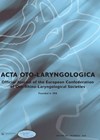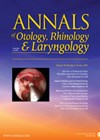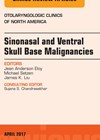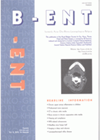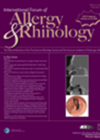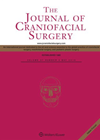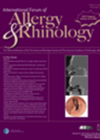
Journal Reviews
Which factors affect the postoperative CSF leak following endoscopic skull base surgery?
Endoscopic skull base surgery is being increasingly performed worldwide for skull base tumours. Common indications include pituitary tumours, rathke cleft cysts, chordomas, craniopharyngiomas and olfactory neuroblastomas. The most common and important complication following endoscopic skull base surgery is postoperative CSF...
The medially-invasive cholesteatoma: a case series
In this small case series, Casazza et al describe their management of seven cases of complex cholesteatoma presenting during a 16-year period. Patients were included if imaging confirmed restricted diffusion and an endophytic, medially-destructive disease involving the otic capsule, petrous...
Robotic surgery for ventral skull base malignancy
The use of transoral robotic surgery (TORS) in the head and neck area has been shown to be a safe and effective technique, achieving good oncological clearance of the oropharynx, hypopharynx, supraglottis and glottic area. However, robotic surgery for the...
Transnasal endoscopic repair of CSF leaks
This Italian study was a retrospective review of 110 consecutive patients who underwent repair of their CSF leak via the transnasal endoscopic approach from 2003 to 2013. All surgery was performed by the same primary surgeon and patients with a...
Sellar surgery – when to prepare for repair
Endoscopic sellar surgery, especially for adenomas, is a relatively safe, straightforward surgery with (mostly) reproducible results and few complications. One of the commonest complications is the creation of a CSF leak with the subsequent need for repair (there is usually...
Improving the temporal contour in reconstruction
A feature of the temporalis flap is the sunken contour left behind. This group from Japan present a variation for filling defects for which we would traditionally use a temporalis muscle containing. The laterally based peri-cranial flap they present uses...
Outpatient closure of CSF leaks: a good idea or a step too far?
After day-case septoplasty, day case thyroidectomy, now day case CSF leak repair – has the pendulum moved too far? The authors put forward a convincing case for what, only 10 years ago, would have sounded like a provocation. They quote...
Safe distances in the infratemporal fossa
This analysis from China involved 50 enhanced CT datasets to reconstruct the skull, internal carotid artery and the internal jugular vein. The anatomical routes of these vessels were related to the styloid process, height of the pterygoid plates, distance from...
What can the anterior cranial fossa fracture pattern tell us?
This assessment involves 81 patients treated between two regional major trauma centres in the UK. Fifty sustained a predominantly anterior directed force and 31 a lateral impact. They found that anterior impacts reduce the incidence of fracture propagated beyond the...

